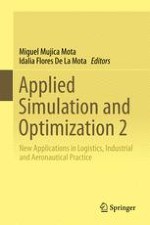
2017 | OriginalPaper | Buchkapitel
A Conceptual Framework for Assessing Congestion and Its Impacts
verfasst von : Jennie Lioris, Alexander Kurzhanskiy, Pravin Varaiya
Erschienen in: Applied Simulation and Optimization 2
Aktivieren Sie unsere intelligente Suche, um passende Fachinhalte oder Patente zu finden.
Wählen Sie Textabschnitte aus um mit Künstlicher Intelligenz passenden Patente zu finden. powered by
Markieren Sie Textabschnitte, um KI-gestützt weitere passende Inhalte zu finden. powered by